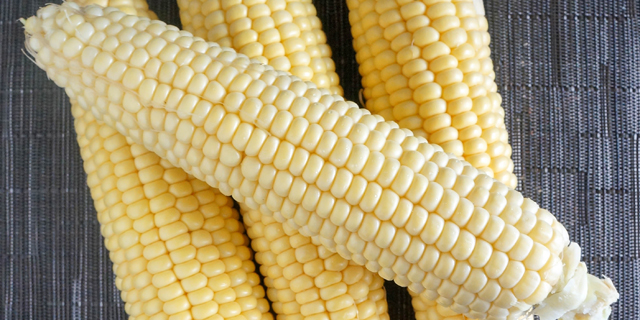A favorite for summer barbecues and warm fall sides, corn is a versatile vegetable that can be found all year long. That’s a good thing, since it is rich in vitamins and antioxidants including skin supporting Vitamin C, metabolism supporting Vitamin B3, immunity boosting Vitamin B5, and manganese, which helps keep your bones strong and healthy. Corn is also full of fiber, which keeps you feeling full longer. With it’s sweet taste and boost of nutrition, it’s no wonder corn is a staple in the Latin American diet.
How do I pick the best corn?
Corn can be found in an array of colors from white and yellow to blue and purple. Regardless of the color, the first thing you want to look at is the husks. Husks should look bright, green, and fresh and should envelope the ear completely (the outer layer of the husk may be a bit loose, but those closer to the ear should be tight fitting).
Next check out the kernels. Pull back the husks on the tip of the ear and ensure that the kernels are plump and firm. Steer clear of an ear that is molded on the top, has soft kernels, or husks that are dried out. If you’re buying from a stand or farmers market, pick those that are in the shade, out of direct sunlight, or in an ice chest. Excess heat can make corn spoil faster, so choose the corn that feels coolest to the touch.
What can I make with corn?
Corn can be grilled, steamed, roasted, baked, or boiled. That’s if you are cooking the ears whole. Once the kernels are taken off the ear, they can be added to cakes, biscuits, bread, sautés, really the possibilities are endless.
No matter what cooking method you choose, to maintain its bright color, crisp texture and delicate flavor don’t overcook corn. Kernels should be tender, not mushy or hard. The simplest way to prepare corn and retain most of its nutrients is by steaming. A quick 5 minute steam is enough to cook the kernels through. Dress with a bit of olive oil, squeeze of lime juice, salt and pepper.
Preparation depends on the cooking method. If cooking without the husk, remove husks and corn silks, then rinse with warm water. If the recipe involves keeping the husks on, remove the outer dried layers of husk then snip off the dried ends and silks from the tip of the ear. Soak the corn in the husk for 30 minutes before broiling, baking, or grilling.
And storage? Corn will keep fresh in the refrigerator for 2-3 days with husks intact. To freeze, blanch ear, cool completely, dry, and pack in a tightly sealed ziplock bag. Frozen blanched corn will last up to twelve months. Alternatively, you can remove the kernels from the blanched corn and freeze them separately. Frozen blanched kernels will stay fresh for up to 3 months.
Recipes to try include: Fresh Corn Soup with Roasted Corn Guacamole, Ancho Grilled Corn, and Lime Cilantro Corn Salsa.


![Making Mealtime Matter with La Familia: Easy Sofrito [Video]](https://thelatinkitchen.com/wp-content/uploads/2015/10/sofrito-shutterstock__0-500x383.jpg)
![Easy Latin Smoothies: Goji Berry Smoothie [Video]](https://thelatinkitchen.com/wp-content/uploads/2015/12/goji_berry-shutterstock_-500x383.jpg)
















![Fun and Fast Recipes: Fiesta Cabbage Salad [Video]](https://thelatinkitchen.com/wp-content/uploads/2015/11/fiesta_cabbage_slaw-shutterstock_-500x383.jpg)









